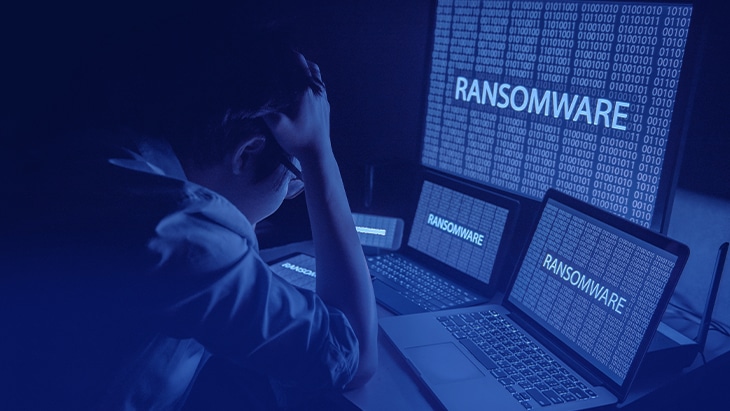Ransomware on the Rise: What Every Organisation Needs to Know
11 March
Cybersecurity threats are evolving rapidly, and among the most concerning trends in recent years is the alarming rise of ransomware attacks. No longer just a risk for large corporations, ransomware now targets organisations of all sizes—from small charities and schools to local councils and multinational enterprises. Understanding the threat and preparing for it is no longer optional; it’s essential.
Why is Ransomware on the Rise?
Several factors have contributed to the surge in ransomware attacks:
-
Remote working has expanded the attack surface, with unsecured devices and home networks providing new entry points.
-
Ransomware-as-a-Service (RaaS) has made it easier for cybercriminals with little technical skill to launch sophisticated attacks using rented tools.
-
Payment in cryptocurrency offers anonymity, making it harder to trace and prosecute attackers.
-
Increased digitisation means more data is vulnerable, and downtime is costlier—leading some victims to pay quickly to resume operations.
Sectors Most at Risk
While no sector is immune, certain industries have been more frequently targeted:
-
Healthcare: Due to the critical nature of their services and sensitive data.
-
Education: Often underfunded in cybersecurity, yet holding valuable personal data.
-
Local government: Running legacy systems with limited IT resources.
-
Manufacturing and logistics: Where downtime can disrupt supply chains and incur massive losses.
Key Strategies for Protection
Being proactive is the most effective defence against ransomware. Here are some essential steps every organisation should consider:
-
Regular Backups
Ensure critical data is backed up frequently and stored securely offline. Test recovery procedures regularly to ensure they work when needed. -
Security Awareness Training
Employees are often the first line of defence. Regular training can help staff recognise phishing emails and suspicious activity. -
Patch and Update Systems
Many attacks exploit known vulnerabilities. Keeping software and systems up to date closes those gaps. -
Use Endpoint Protection and Firewalls
Employ modern antivirus software, endpoint detection and response (EDR), and firewall configurations to detect and block threats early. -
Implement Multi-Factor Authentication (MFA)
MFA adds an extra layer of protection, particularly for remote access and admin accounts. -
Have an Incident Response Plan
Preparation can limit damage. Your plan should include steps for containment, communication, legal compliance, and recovery.
Should You Ever Pay the Ransom?
Law enforcement and cybersecurity experts strongly advise against paying. Payment doesn’t guarantee data recovery, and it fuels the business model of ransomware groups. In the UK, organisations are also subject to regulations such as the UK GDPR, which require disclosure of breaches and may impose penalties.
Final Thoughts
Ransomware is not just a technical issue—it’s a business-critical threat. Every organisation, regardless of size or sector, must adopt a holistic approach to cybersecurity. The cost of preparation is significantly lower than the cost of recovery, reputational damage, or regulatory fines.
